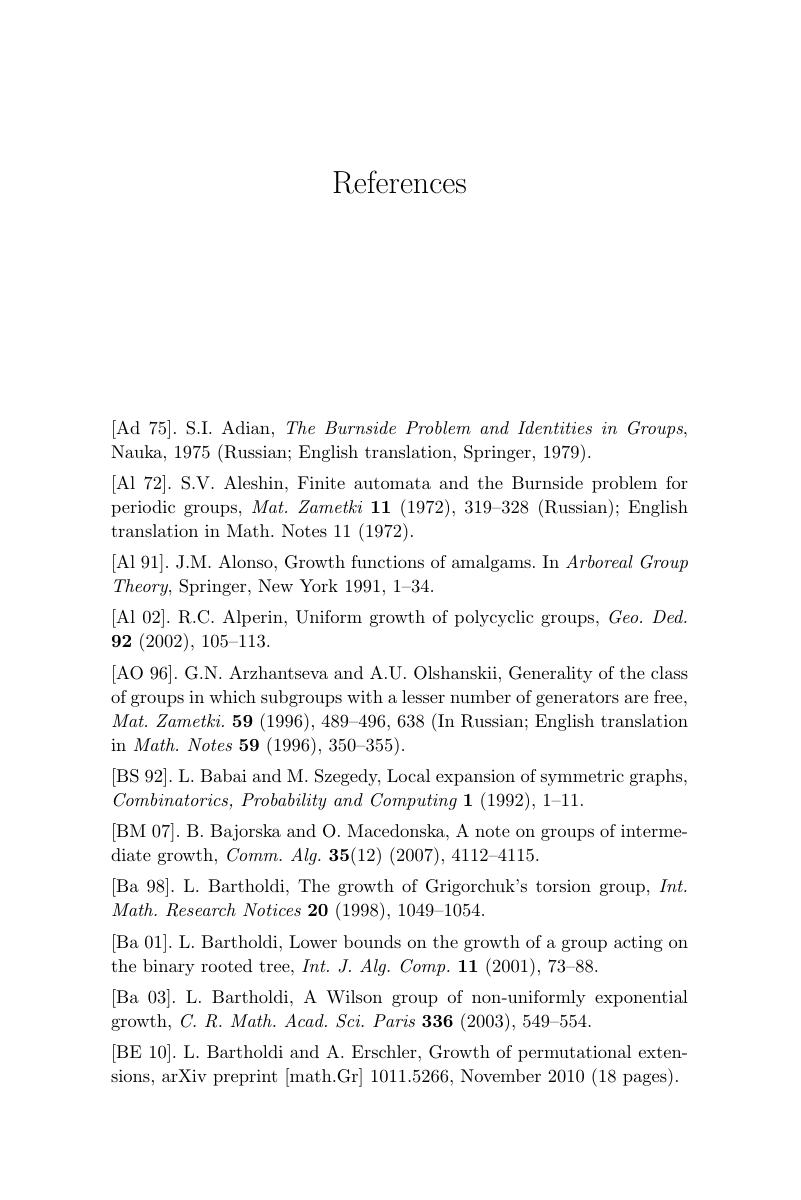Book contents
- Frontmatter
- Contents
- Preface
- 1 Introduction
- 2 Some Group Theory
- 3 Groups of Linear Growth
- 4 The Growth of Nilpotent Groups
- 5 The Growth of Soluble Groups
- 6 Linear Groups
- 7 Asymptotic Cones
- 8 Groups of Polynomial Growth
- 9 Infinitely Generated Groups
- 10 Intermediate Growth: Grigorchuk's First Group
- 11 More Groups of Intermediate Growth
- 12 Growth and Amenability
- 13 Intermediate Growth and Residual Finiteness
- 14 Explicit Calculations
- 15 The Generating Function
- 16 The Growth of Free Products
- 17 Conjugacy Growth
- 18 Research Problems
- References
- Index
- References
References
Published online by Cambridge University Press: 05 January 2012
- Frontmatter
- Contents
- Preface
- 1 Introduction
- 2 Some Group Theory
- 3 Groups of Linear Growth
- 4 The Growth of Nilpotent Groups
- 5 The Growth of Soluble Groups
- 6 Linear Groups
- 7 Asymptotic Cones
- 8 Groups of Polynomial Growth
- 9 Infinitely Generated Groups
- 10 Intermediate Growth: Grigorchuk's First Group
- 11 More Groups of Intermediate Growth
- 12 Growth and Amenability
- 13 Intermediate Growth and Residual Finiteness
- 14 Explicit Calculations
- 15 The Generating Function
- 16 The Growth of Free Products
- 17 Conjugacy Growth
- 18 Research Problems
- References
- Index
- References
Summary

- Type
- Chapter
- Information
- How Groups Grow , pp. 187 - 194Publisher: Cambridge University PressPrint publication year: 2011



